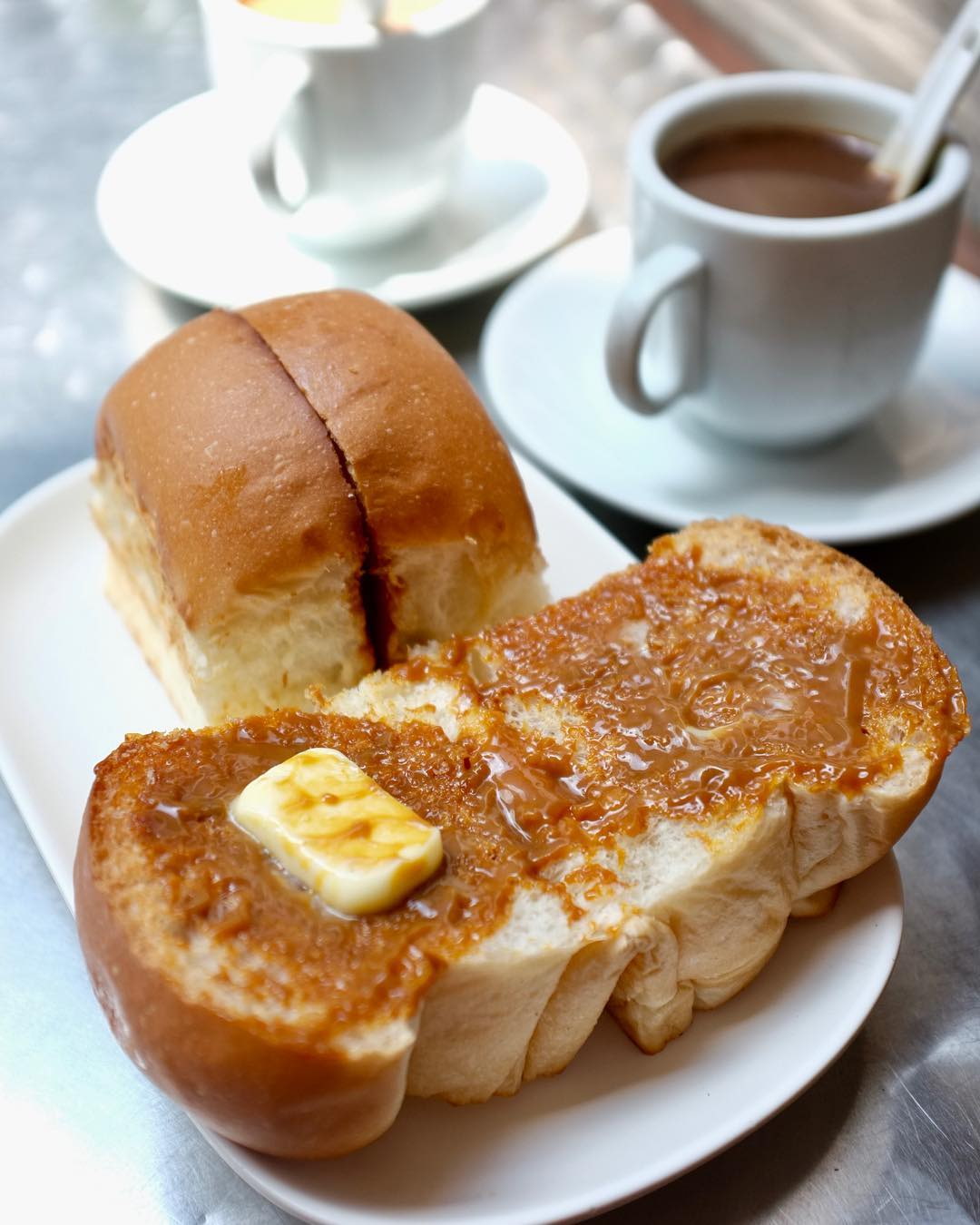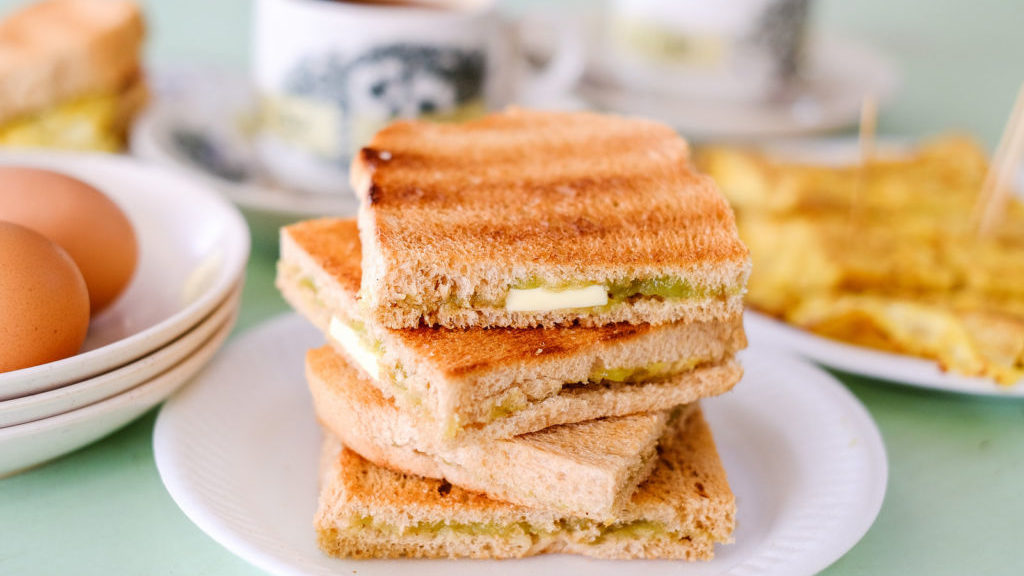ON HAWKER: Kaya Toast
ON HAWKER is our ongoing research project on Singapore’s hawker culture. We explore essential dishes from this city’s culinary tradition and investigate their international influences.
You cannot talk about iconic Singapore breakfasts without talking about the Breakfast Set: kaya toast accompanied by two soft-boiled eggs and a cup of Kopi O. From Ya Kun Kaya Toast to Killiney, its legacy in Singapore is longstanding. But the question remains: who brought kaya, and from where?
Kaya jam is the product of a labour of love: eggs and sugar are mixed with coconut and pandan, after which the entire mixture is slow cooked and stirred until it reaches its desired consistency.1

The tradition of mixing sugar with eggs comes from the nunneries of Portugal. Journalist Janet Boileau, in her PhD thesis on Luso-Asian cuisine, highlights that egg whites were believed to be harmful, and that medieval Portuguese discovered egg yolks were best preserved when cooked with sugar.2
Here, she indicates the presence of minor Arab influence, too. They introduced cane sugar to Portugal during the invasions of the Umayyad Empire in the 9th century. Boileau also speaks of the nuns’ “traditional expertise in sweet making”.3 A famous egg-yolk and sugar-based dessert that emerged from these nunneries is known as ovos moles.4
The Portuguese colonisation of Malacca in 1511 may have resulted in the knowledge sharing of mixing eggs with sugar. In due time, it was combined with ingredients local to Malaysia and Indonesia— like pandan and coconut— to create the kaya we know today.

Its arrival in Singapore follows a Hainanese immigrant, Loi Ah Koon, who is widely recognised as the founder of Ya Kun Kaya Toast, the first coffeeshop in Singapore to sell kaya toast along with soft boiled eggs and coffee.5
This point was corroborated by local practitioner Byron Soh, whom we interviewed in our efforts to understand more about kaya in Singapore. Byron, who until recently owned his own chain of cafes that sold kaya, added that it is possible to learn how to make kaya in a day (like he did), and that these recipes are usually passed down different generations through word of mouth.
Coffee, too, has an interesting history in Singapore. When various immigrant cultures began to “intermingle” after a flood of immigration in the late 18th century, “the European love of coffee met Malaysian taste buds and kopi was born”.6
Robusta beans that were used in European coffee were replaced with Arabica beans because they grew better in Southeast Asian climate.7 Without proper brewing appliances, local coffee shops used and still use the “sock filter”, which facilitated the creation of the potent Kopi O that coffee shop uncles and aunties pour into cups in every shop.8
Annotated Bibliography
Boileau, 2010. “A culinary history of the Portuguese Eurasians: The origins of Luso-Asian cuisine in the sixteenth and seventeenth centuries”.
Janet P. Boileau is the CEO of Taste and Travel Publishing International, Inc., which launched the Taste & Travel food magazine in March 2011. Boileau herself holds a Ph. D. in history from the University of Adelaide, which we refer to heavily in our studies involving Portuguese influence.
Zienchuk, 2013. Epicure & Culture. “An Introduction to Singaporean Kopi Culture”. Source: https://epicureandculture.com/an-introduction-to-singaporean-kopi-culture/.
Epicure and Culture is an online magazine dedicated to immersive culinary experiences and responsible tourism. The stories that they commit to are meant to be as complete as possible, drawing from narratives from local experts and laypeople alike.
Written by Arjun Jayaraman.
Notes
1Rasa Malaysia. “Kaya (Malaysian Coconut Egg Jam)”. Source: https://rasamalaysia.com/kaya-recipe-malaysian-coconut-egg-jam/
2Boileau, 2010. “A Culinary History of the Portuguese Eurasians: The Origins of Luso-Asian Cuisine in the Sixteenth and Seventheeth Centuries”.
3Ibid.
4Center of Portugal. ““Ovos Moles” of Aveiro”. Source: https://www.centerofportugal.com/poi/ovos-moles-of-aveiro/.
5Ya Kun. “The Ya Kun Story”. Source: http://yakun.com/the-ya-kun-story/history/.
6Zienchuk, 2013. Epicure & Culture. “An Introduction to Singaporean Kopi Culture”. Source: https://epicureandculture.com/an-introduction-to-singaporean-kopi-culture/.
7Ibid.
8Ibid.

